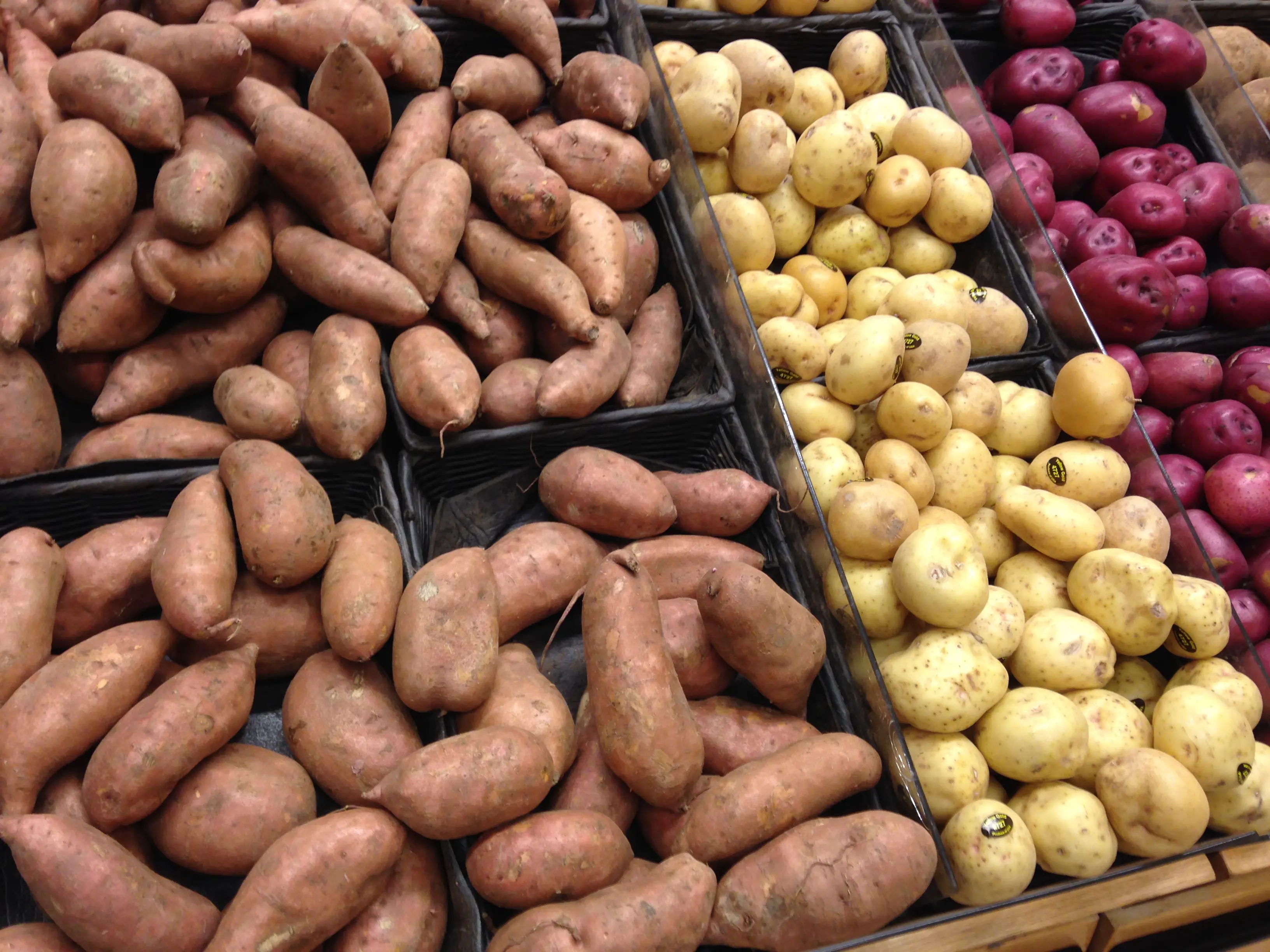
There are many varieties of potatoes on store shelves, and up to four different kinds may be GMO by the time fall 2017 hits. Photo via Wikipedia Commons
In July 2015, the first genetically engineered (or genetically modified, otherwise known as “GMO”) potatoes arrived on store shelves in the form of a specific type of white russets.
Now nearly two years later, most consumers still remain blissfully unaware that the potatoes even exist, and to make matters more complicated, three new types of GMO potatoes are on the way.
As has been the case for the entire GMO era in the United States, no labeling will be required for the controversial new potatoes, which were approved by J.R. Simplot despite a projected $1.6 billion disruption to the U.S. potato export market due to expected rejections from other countries.
But they’re almost certainly coming to fall shelves this fall whether we like it or not, and there are more than a few things you must know if you want to avoid them.
Three Types of New GMOs Set to Hit Store Shelves
While they have been declared “safe” by the U.S. EPA and FDA, critics say the new GMO potato varieties, which will be grown mostly in Idaho and Wisconsin, have not undergone the type of long-term independent safety or environmental testing befitting of an entirely new type of organism.
The three new varieties to watch out for are as follows: Ranger Russet, Atlantic and Russet Burbank, in addition to the White Russet variety that was introduced in limited quantities in 2015.
The new GMO potatoes have been genetically engineered to resist the pathogen that caused the Irish potato famine, and likely will be planted this spring before being sold in the fall. The potatoes are part of the “Innate” line from J.R. Simplot.
These potatoes are said to have less bruising, less of a carcinogenic chemical that is given off when cooking, fewer black spots and enhanced cold storage. They were also engineered to use less fungicides, according to the developers.
While GMO producing corporations continue to make similar promises about their creations, a recent October 2016 report from The New York Times titled ‘Broken Promises of Genetically Modified Crops’ found that the crops have not lived up to promises of greater yields or less agricultural chemical use.
Meanwhile, skeptics of the new GMO potato wonder what exactly was wrong with the regular version, and whether the new varieties have been adequately tested for allergens and other issues, because of the cumulative effects of long-term eating of a food that is one of the world’s four staple food crops.
In the early days of the GMO experiment, Arpad Pustzai, a respected Scottish biologist, studied the original GM potato and found dramatic health risks showing that the potatoes damaged the gut, immune system, and other organs of lab animals; the study helped lead to the current climate of skepticism and bans on the cultivation of GM crops throughout Europe.
The new GMO potatoes are quite a bit different from the original ones Pustzai studied, however.
But they have been created using a new process called “gene editing,” one that allows the plants to avoid the type of regulation that traditional GMOs are subject to (standards critics say are already too lax), making them far less tested than the peer-reviewed independent process Pustzai went through originally in 1998.
***
***
How to Avoid the New GMO Potatoes
The new potatoes come in the three main varieties listed above: Ranger Russet, Atlantic and Ruset Burbank; White Russet may also be on store shelves currently (click here to learn how to avoid this variety).
Unfortunately for consumers, the new GMO potatoes could begin showing up in many places without warning: from grocery store shelves to cafes and restaurants, due to the fact that they will not be labeled.
The lack of mandatory labeling comes as a result of the Biotech and food industry spending tens of millions of dollars to prevent it, and also the recent national law that was crafted in order to subvert the state of Vermont’s democratically passed mandatory labeling law on GMOs.
For now, your best bet is to buy the above varieties of potatoes organic whenever possible, and to contact the Simplot company by phone or email, or on the Facebook page by clicking here, and telling them how you feel about the new potatoes. You can also look for the words “Innate” or Simplot on the bag, and choose to buy different varieties whenever possible.
***
Find the Best Pasture-Raised Organic Meat On Sale Here
***
At any rate, spending your organic dollars on potatoes is already one of your best bets anyway: they are one of the most heavily sprayed crops, and their soft skin soaks up pesticide residues far more than many other food crops.
Recommended Reading:
Genome Editing: A Dangerously Untested (and Totally Unlabeled) New Type of GMO
Thanks for installing the Bottom of every post plugin by Corey Salzano. Contact me if you need custom WordPress plugins or website design.




